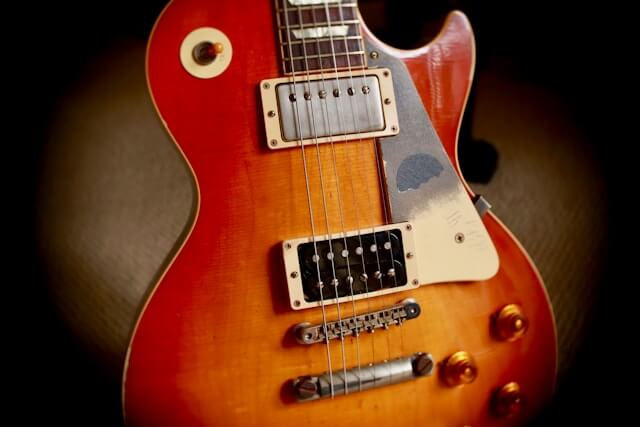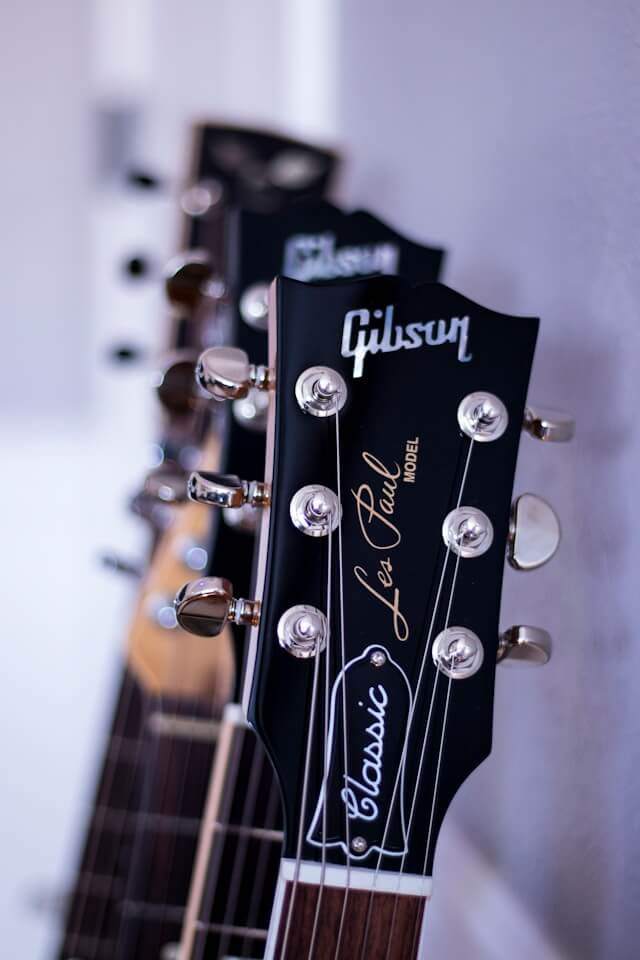Gibson Guitars: The Iconic Brand
- The American Guitar Academy
- Jul 7, 2024
- 6 min read
Few names in the world of musical instruments evoke the same sense of reverence and admiration as Gibson. Founded in 1902 by Orville Gibson in Kalamazoo, Michigan, the Gibson brand has become synonymous with quality, innovation, and iconic sound. From its humble beginnings to its status as a global industry leader, Gibson’s journey is a testament to the power of craftsmanship and the enduring appeal of the guitar.
Orville Gibson, a luthier with a passion for musical instruments, laid the groundwork for what would become one of the most influential guitar manufacturers in history. His innovative designs, particularly in mandolins, set the stage for Gibson's entry into the guitar market. Orville’s unique approach to construction, such as his patented carved-top design, distinguished Gibson instruments from others and established a foundation of innovation and quality.

The Birth of the Gibson Guitar : Acoustic Archtops & Jazz
The early 20th century saw the rise of the archtop guitar, and Gibson was at the forefront. In 1922, Gibson introduced the L-5, designed by Lloyd Loar. The L-5 was revolutionary, featuring F-holes instead of the traditional round sound hole, a carved top and back, and a floating bridge. This model quickly became popular among jazz musicians and remains a coveted instrument today. Archtop guitars are versatile instruments that can be used in a wide range of jazz styles, from traditional swing to bebop, cool jazz, and fusion. They are equally at home playing rhythm parts or soloing, and their warm, rich tone is well-suited to both.
Gibson Archtop guitars are known for their carved top design, which gives them a distinct look and contributes to their unique sound. They come in various models, including the Gibson ES-175, ES-125, L-5, and Super 400. Each model has its own characteristics, but they all share the common feature of a warm, rich tone that is well-suited to jazz music.
The Electric Revolution: The Gibson ES-150
Gibson’s contribution to the electric guitar is monumental. In 1936, they released the ES-150, one of the first commercially successful electric guitars. Its warm, rich tone made it an instant hit, particularly in the burgeoning jazz scene. The ES-150’s success paved the way for further innovations in electric guitar design. The association between Gibson Archtop guitars and jazz music dates back to the early days of jazz. One of the earliest and most influential jazz guitarists to use an archtop guitar was Charlie Christian. Christian was a member of the Benny Goodman Orchestra in the late 1930s, and his amplified solos on his Gibson ES-150 archtop guitar helped to popularize the instrument and establish it as a staple of jazz music.
The Les Paul: A Rock Icon is Born
In 1952, Gibson introduced what would become one of the most iconic electric guitars of all time: the Gibson Les Paul. Named after the legendary guitarist and inventor Les Paul, this solid-body guitar featured a unique design and unparalleled sound quality. Its versatility and sustain made it a favorite among rock and blues musicians. Over the years, the Les Paul has been used by countless guitar legends, including Jimmy Page, Slash, and Eric Clapton, cementing its place in rock history.
The Gibson Les Paul is renowned for several reasons, each contributing to its iconic status in the world of music. Its fame and significance stem from a combination of innovative design, exceptional sound quality, and its association with legendary musicians. Understanding why the Les Paul is so famous involves delving into its development, its impact on music, and the unique features that set it apart from earlier archtop models.
Solid-Body Construction:
One of the most significant innovations of the Les Paul was its solid-body construction. Unlike earlier archtop models, which were typically hollow or semi-hollow, the Les Paul’s solid body greatly reduced feedback, a common issue with hollow-body guitars at high volumes. This made it ideal for the louder, more aggressive styles of music that were emerging in the 1950s and 1960s. Solid-body guitars are generally more durable than hollow or semi-hollow archtop models. The Les Paul’s robust construction made it less susceptible to damage from the rigors of touring and live performances, appealing to professional musicians who needed reliable instruments.
Sustain and Tone:
The solid body, combined with the set neck construction (as opposed to a bolt-on neck), provided exceptional sustain and a rich, full-bodied tone. The Les Paul is known for its warm, resonant sound, with a pronounced midrange and smooth, singing quality, especially when paired with the humbucker pickups that Gibson developed. Archtop guitars, while rich in acoustic tone, often lacked the sustain that rock and blues musicians desired. The solid-body Les Paul provided significantly more sustain, allowing notes to ring out longer and more clearly, which was essential for the solos and riffs that defined these genres.
Humbucker Pickups:
Introduced in the mid-1950s, the humbucker pickups on the Les Paul were a significant development. These pickups reduced the hum and noise associated with single-coil pickups, providing a cleaner, more powerful sound. The PAF (Patent Applied For) humbuckers became a hallmark of the Les Paul, contributing to its distinctive sound.
The shift from archtop to solid-body construction was revolutionary. Archtop guitars, with their hollow bodies, were prone to feedback when amplified at high volumes. The Les Paul’s solid body eliminated this issue, making it suitable for the evolving rock and roll genre that demanded higher volumes and gain.
Elegant Design
The Les Paul is also famous for its elegant design. With its carved maple top, sleek single-cutaway body, and luxurious finishes, it stands out as a visually stunning instrument. The combination of mahogany and maple not only looks beautiful but also contributes to its unique tonal characteristics. The Les Paul’s design makes it highly versatile, suitable for a wide range of musical genres from jazz and blues to rock and metal. Its thick neck and shorter scale length provide a different playing experience compared to other guitars, offering a feel that many musicians find comfortable and inspiring.
Association with Legendary Musicians:
The Les Paul’s fame is bolstered by its association with numerous legendary musicians. Icons like Jimmy Page, Eric Clapton, Slash, and Duane Allman have all used Les Paul guitars, contributing to its mystique and desirability. The image of these guitar heroes wielding a Les Paul has cemented its status as a symbol of rock and roll. Many historic performances and recordings feature the Les Paul. For instance, Jimmy Page used a 1959 Les Paul Standard on numerous Led Zeppelin recordings, and Slash’s use of the Les Paul on Guns N’ Roses' "Appetite for Destruction" album is iconic. These associations have ingrained the Les Paul into the fabric of rock history.
The SG and Other Notable Models
In 1961, Gibson launched the SG (Solid Guitar) model, initially intended as a redesign of the Les Paul. The SG featured a thinner, double-cutaway body, making it lighter and more comfortable to play. Its sharp, aggressive tone quickly made it popular with rock and heavy metal musicians. The SG’s distinctive look and sound have made it a staple in the guitar world, with famous players like Angus Young of AC/DC and Tony Iommi of Black Sabbath championing its use.
Other notable models include the Gibson ES-335, a semi-hollow electric guitar that bridged the gap between the rich tones of hollow-body guitars and the feedback resistance of solid-body guitars, and the Gibson Flying V, known for its radical design and association with rock and metal.
Craftsmanship and Quality
One of the hallmarks of Gibson guitars is their exceptional craftsmanship. Each guitar is meticulously crafted from high-quality materials, ensuring that every instrument not only sounds great but also stands the test of time. Gibson’s attention to detail in every aspect of construction, from the selection of woods to the precision of the hardware, is what sets their guitars apart.
Throughout its history, Gibson has continuously innovated and adapted to changing musical landscapes. Whether through the development of new models or the incorporation of advanced technology, such as their automatic tuning system introduced in recent years, Gibson has maintained its reputation as a forward-thinking company while staying true to its rich heritage.

Gibson Today: A Legacy Continues
Today, Gibson continues to be a major player in the guitar industry. Despite facing financial challenges and changes in ownership, the company has remained resilient, reestablishing itself with a renewed focus on quality and tradition. Gibson’s custom shop continues to produce some of the finest guitars available, and their new models reflect both a respect for tradition and a commitment to innovation.
Gibson guitars are more than just instruments; they are a symbol of musical excellence and innovation. From the early days of Orville Gibson’s workshop to the legendary status of the Les Paul and beyond, Gibson’s legacy is one of craftsmanship, quality, and a deep connection to the music world. For over a century, Gibson guitars have helped shape the sound of music, and their influence shows no signs of waning. Whether in the hands of a beginner or a seasoned professional, a Gibson guitar remains a treasured piece of musical history, a testament to the enduring power of great craftsmanship and timeless design.
-Ryan

Comments